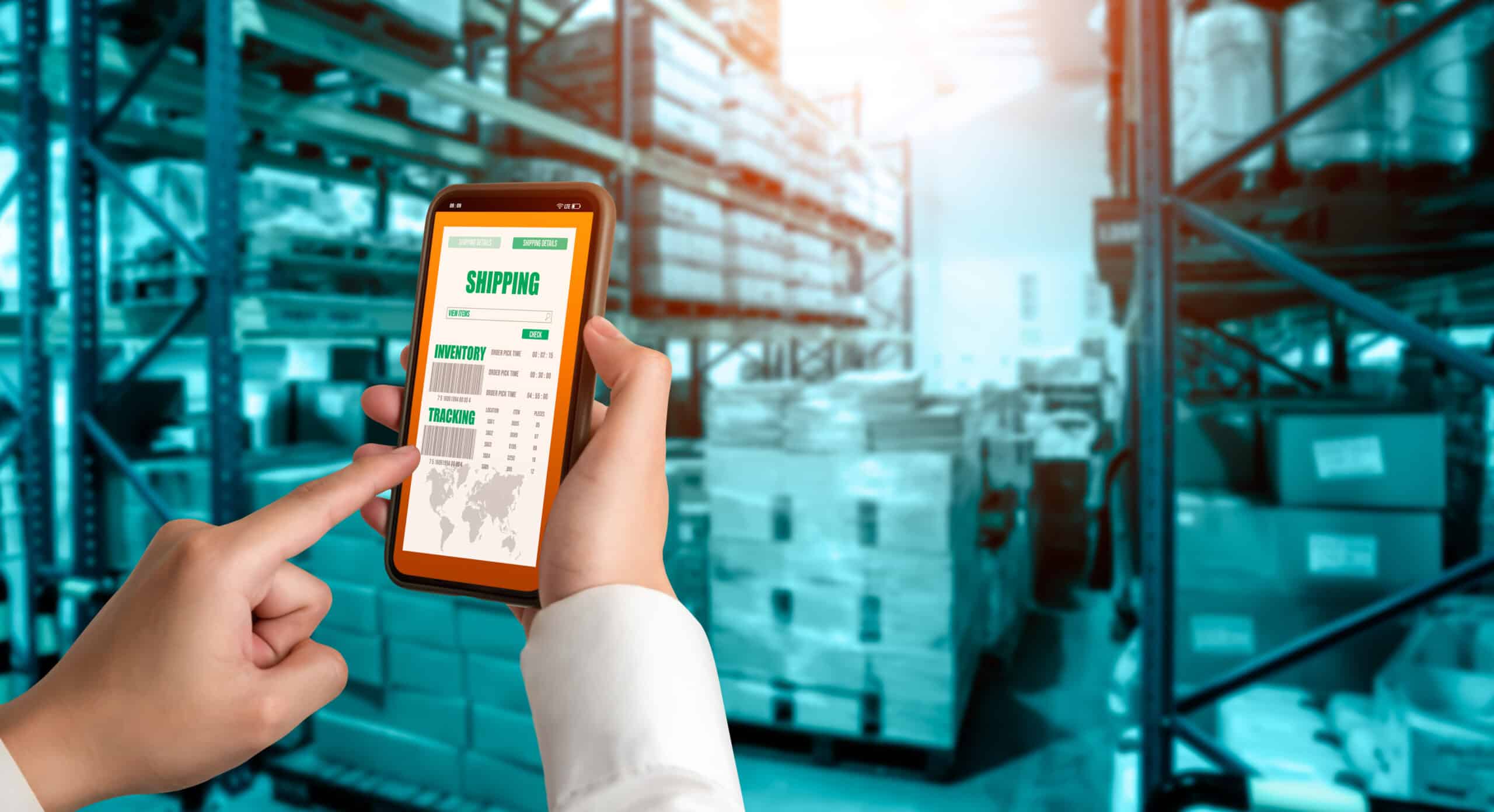Today’s supply chains are far more than just networks that move goods from point A to point B. They are complex global systems that respond in realtime to data, insights, and change. In this ecosystem, there are two transformative technologies that, when properly integrated, have the power to revolutionize the way supply chains function: artificial intelligence (AI) and the Internet of Things (IoT).
AI and IoT in supply chain management are a powerhouse duo, providing companies with unprecedented real-time insights, predictive capabilities, intelligent analysis, and automated solutions. How exactly? IoT collects and transmits data from devices, machines, and sensors, while AI analyzes this data and makes intelligent decisions and suggestions.
Here’s how AI and IoT work together to transform supply chains.
What are AI and IoT in Supply Chains?
To fully understand the role of AI and IoT in supply chains, let’s start by breaking down each technology.
AI in Supply Chains
Artificial intelligence, or AI, is a branch of computer science that enables computers to learn, solve problems, and make decisions. In supply chains, AI is primarily used for tasks like data analysis, predictive modeling, and automating repetitive tasks. By processing vast amounts of both historical and real-time data, AI can anticipate expected demand, optimize inventory levels, and even predict potential disruptions.
AI is a powerful tool for enhancing supply chain performance, with studies showing that top supply chain organizations are using AI to optimize processes at more than twice the rate of their low-performing peers.
IoT in Supply Chains
The Internet of Things, or IoT, refers to a network of interconnected physical devices that collect and share data through sensors, software, and other technologies. In supply chains, IoT is vital for monitoring equipment, devices, and other “things” in real time. For example, IoT devices on delivery trucks can monitor location, temperature, and humidity, providing critical information for transporting goods.
IoT adoption in supply chains is growing in popularity, and by 2033, the global market worth of IoT in supply chain management is expected to exceed $40 billion.
How AI and IoT Work Together in Supply Chain Management
While both AI and IoT in supply chains are essential technologies in their own right, the way they work together has the power to transform the way businesses operate. How exactly? IoT devices first provide a continuous stream of data from devices and sensors. Then, AI can collect and interpret this data to generate insights, make predictions, and even suggest decisions.
Here’s a closer look at how this integration drives innovation across supply chains:
1. Real-time visibility and monitoring
IoT devices, such as trackers and sensors, offer visibility into the exact condition, location, and status of machines and goods as they function and move through the supply chain in real time. AI then collects and leverages this data to generate actionable insights.
For example, a shipment of temperature-sensitive products equipped with IoT sensors can relay data to an AI-powered system that monitors temperature fluctuations. If an issue is detected, the system can trigger alerts, or even adjust the temperature to protect the goods.
2. Predictive maintenance and equipment health
AI and IoT in supply chains enable predictive maintenance, which helps prevent equipment breakdowns and reduces downtime. Predictive maintenance is a proactive approach to equipment management and repair, which uses data and analytics to anticipate when equipment is likely to fail.
IoT sensors installed on machines collect data on metrics such as temperature, vibrations, and usage hours. Then, AI algorithms analyze these metrics to detect early signs of wear and predict when maintenance is needed. This means that instead of adhering to a fixed maintenance schedule (which might lead to unnecessary maintenance or breakdowns), companies can service equipment only when necessary.
3. Demand forecasting and inventory optimization
AI’s data analytics capabilities allow it to predict demand and make inventory recommendations based on a range of data inputs, including data collected from IoT sensors. For example, AI-based algorithms can predict anticipated demand for various products, while IoT-enabled sensors provide visibility into inventory levels at various warehouses. This allows companies to dynamically adjust ordering processes to align with real-time inventory levels with anticipated demand, reducing the risk of overstocking or stockouts.
4. Route optimization and fleet management
In logistics, IoT devices installed in vehicles continuously track factors like location, speed, fuel consumption, and road conditions. AI then processes this data to recommend optimized routes, reduce delivery times, and minimize fuel costs. For example, AI systems can suggest routes that bundle deliveries together, ensuring goods reach their destination as quickly and efficiently as possible.
The combination of AI and IoT enables companies to turn raw data into real-time, actionable insights that can streamline and strengthen supply chain operations.
Tips for Successful Integration
Successfully integrating AI and IoT in supply chains requires thoughtful planning and integration. While you might already use some form of either IoT and/or AI within your business, adopting emerging forms of these technologies and using them together successfully likely involves addressing technological, operational, and strategic challenges.
Here are some practical tips to help ensure a successful integration of AI and IoT within your supply chain organization.
1. Determine your starting point
Your organization already has some sort of technological infrastructure in place, whether that’s sensors on certain machinery, an ERP system, or demand forecasting software. Whether you’re looking to overhaul your current systems, implement technologies for the first time, or launch some patch upgrades, it’s important to first understand your “technological starting point.” What are your current systems like? Where are their gaps? How will new technology need to work in tandem with your previous capabilities?
2. Then, identify clear objectives
Before launching any new AI and IoT technologies, it’s crucial to outline clear objectives that align with your business goals, to monitor progress and achieve results. Are you aiming to reduce costs, improve delivery times, increase inventory accuracy, or enhance customer satisfaction? Setting specific goals will help you select the right technologies and evaluate the success of your integration.
Also, establish key performance indicators (KPIs) to measure progress, such as order accuracy, delivery lead time, and maintenance costs. Regularly monitoring and assessing these KPIs allows you to gauge the effectiveness of your AI-IoT integration and make adjustments as needed.
3. Invest in quality data collection and management systems
High-quality data is essential for both AI accuracy and IoT effectiveness. Because of this, it’s important to invest in systems and technologies that generate clean, accurate data, and which result in advanced insights. This might include advanced sensors and IoT systems, as well as supply chain management software which produces intelligent insights and demand forecasts from the raw data.
4. Train your teams
An effective AI-IoT integration requires collaboration between IT, operations, warehouse, and supply chain teams. These employees need to be well-trained on all necessary systems and technologies and need to work together to align on objectives, troubleshoot issues, and ensure systems meet operational needs. To maximize the effectiveness of these systems, involve end-users early in the integration process to understand their workflows, pain points, and training needs, to ensure the technology is both usable and impactful.
Integrating AI and IoT in supply chains can transform operations and unlock new efficiencies, but achieving success requires a well-planned approach. By understanding these technologies and prioritizing effective integration, companies can build a robust AI-IoT network that supports their supply chain needs.
StockIQ: Your Partner for Seamless AI and IoT Integration
AI and IoT go hand-in-hand in today’s supply chains. And if you’re ready to leverage the power of both of these technologies to take your business to the next level, we’re here to help. We’re StockIQ, and our user-friendly supply chain management software allows you to control inventory, simplify ordering, and improve forecasting with ease.
Find out how StockIQ can help you leverage the power of AI and IoT by contacting us today or requesting a StockIQ demo.

